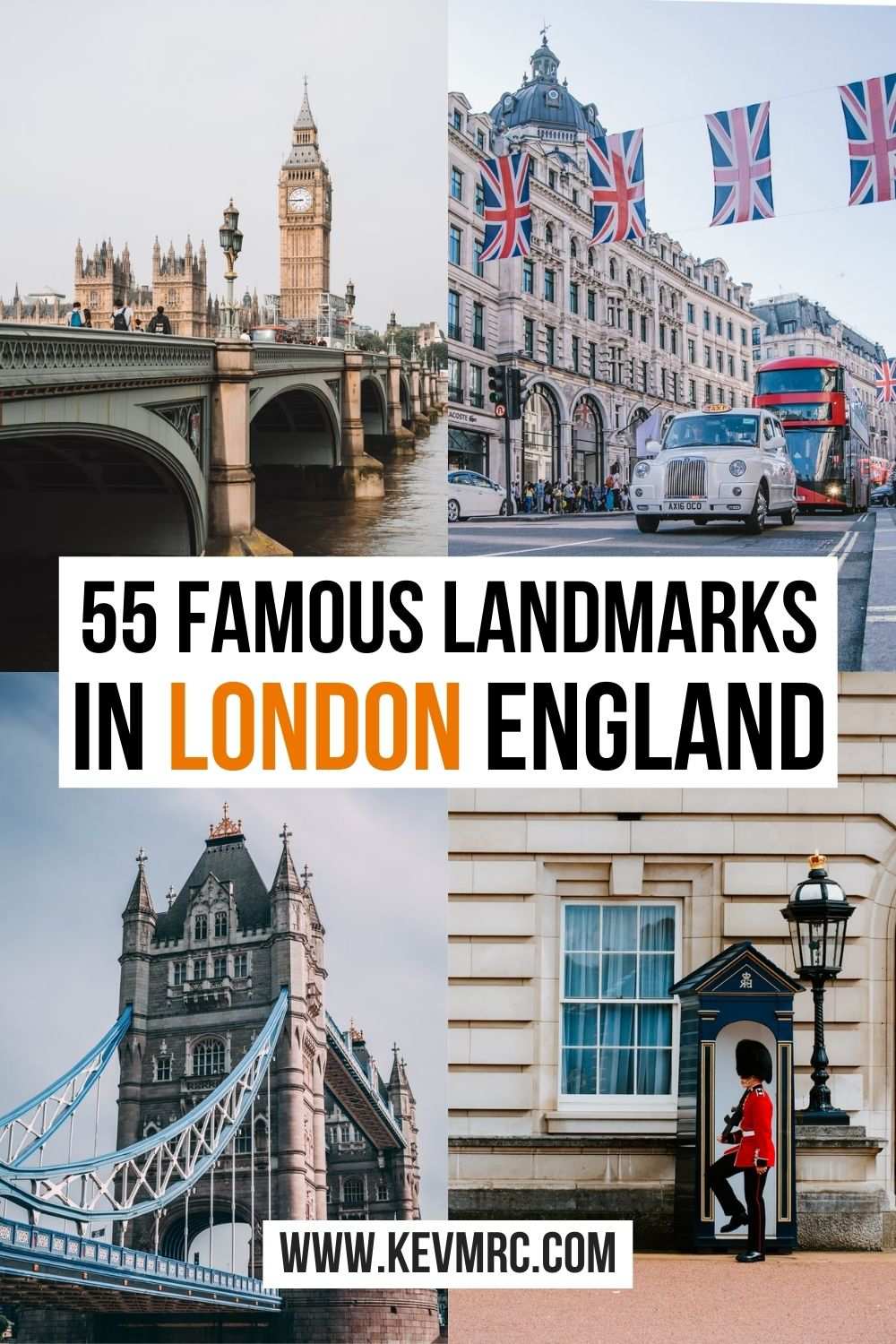55 Famous Landmarks in London You Need to Visit
Ranked in the top 5 most visited cities in the world for years, the capital of England and the United Kingdom is one of the largest European cities. Dynamic, cosmopolitan, vibrant and modern, London is endowed with an exceptional historical and cultural heritage that will delight all tourists.
Wondering what are the famous landmarks of London?
Here’s the list of the 55 most famous landmarks in London! 🇬🇧
TABLE OF CONTENTS
Full List of the 55 Famous Landmarks London Has to Offer
As you may already know, there are TONS of landmarks in London. To make it easier, we’ve breakdown the list into 5 main categories gathering the very famous attractions: the London’s top 10 landmarks, the buildings, the museums, the squares & districts, and the parks & gardens.
We’ve added a final additional part with all other great landmarks, but more secondary.
⭐️ Top 10 iconic London landmarks:
- Buckingham Palace
- Palace of Westminster
- Big Ben
- Westminster Abbey
- St. Paul’s Cathedral
- Tower Bridge
- Tower of London
- London Eye
- Hyde Park
- The British Museum
🏰 Famous buildings in London:
- Kensington Palace
- The Shard
- Borough Market
- Millennium Bridge
- Monument to the Great Fire of London
- Hampton Court Palace
🏛 Famous museums in London:
- Natural History Museum
- Tate Modern
- Madame Tussauds
- Science Museum
- The National Gallery
- HMS Belfast
⛲️ Famous districts & squares of London:
- Piccadilly Circus
- Covent Garden
- Camden Town
- Trafalgar Square
- Carnaby Street
- Portobello Road
🌳 Famous parks & gardens in London:
- Kew Gardens
- Sky Garden
- The Regent’s Park
🔎 Other London famous landmarks & monuments:
- St Jame’s Park
- The Churchill War Rooms
- National Portrait Gallery
- Chinatown Gate
- Westminster Cathedral
- The Wallace Collection
- Somerset House
- Royal Albert Hall
- Victoria and Albert Museum
- Holland Park
- St Mary Axe
- Museum of London
- Barbican Centre
- Shakespeare’s Globe
- Southwark Cathedral
- Imperial War Museum
- Sea Life Centre
- King’s Cross
- London Zoo
- Studios Abbey Road
- Hampstead Heath
- Royal Observatory Greenwich
- National Maritime Museum
- Cutty Sark
So here’s the list of the 55 top London landmarks. To learn more about each of them, keep reading below! 👇
Top 10 Iconic London Landmarks
When you think of London, you might already have some famous landmarks of London in mind, those that make London shine throughout the world.
Well, let’s start this post with the top 10 iconic landmarks in London. 🔎
1. Buckingham Palace
We had to start this list of London iconic landmarks with this one. Located between Hyde Park and Trafalgar Square in center London, Buckingham Palace in nothing less than the residence of Queen Elizabeth II. It’s one of the few royal palaces still in use today.
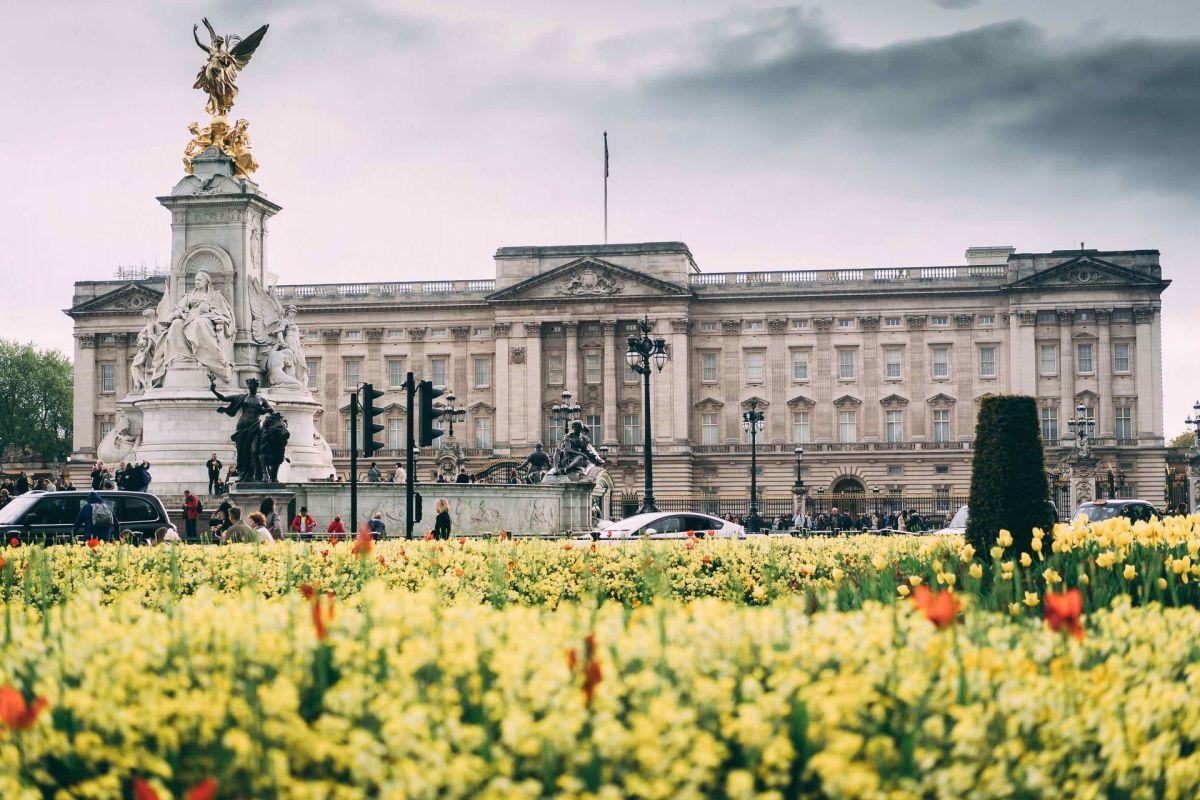
Built for the Duke of Buckingham John Sheffield in the early 18th century, the palace was purchased in 1762 by King George III to use it as a private residence. Over the years, the palace has gone through many changes until Queen Victoria made it the official residence of the British sovereigns in 1837.
The changing of the palace guard is one of the most popular attraction in London. It takes place everyday between May and July, and every 2 days in the rest of the year. It draws large crowds, so make sure to come early to pick a good spot if you want to see it!
2. Palace of Westminster
Located on the banks of the River Thames, the Palace of Westminster is one of the most photographed landmarks in the UK, as well as one of the most important historic landmarks in London.

Completed in the 11th century, the Palace of Westminster was the main residence of the Kings of England until a fire destroyed a part of it in 1531. Henry VII launched slight renovations of the building but moved to the Palace of Whitehall nearby. Since then, the Palace of Westminster serves as the seat of the Houses of Parliament and as a court of law.
With 1,200 rooms, 3.5 kilometers of corridors, 100 staircases, 11 courtyards, a 290-meter long facade and its famous Clock Tower (the Big Ben), the Palace of Westminster is incredibly huge!
3. Big Ben
The Big Ben is to London what the Statue of Liberty is to New York: the symbol of the city and the most iconic landmark of London!

Attached to the Palace of Westminster, this 96-meter high gothic tower was built in 1858 by Benjamin Hall. The famous chimes of the Big Ben were transmitted by the BBC radio for the first time in 1923 to celebrate the New Year. Since then, it became a tradition and until today, Londoners celebrate the New Year with the sound of the Big Ben’s chimes. The sound of this 13.5 ton bell could be heard up to 6 kilometers away!
Also known as the Clock Tower, the Big Ben got renamed Elizabeth Tower to honor the Queen’s Diamond Jubilee in 2012.
4. Westminster Abbey
Located just a few steps away from the Big Ben, Westminster Abbey is one of the most famous London landmarks. This masterpiece of Gothic style is classified as a UNESCO Heritage Site since 1987.

Built under King Henry III in the 13th century, Westminster Abbey is an important symbol of the British monarchy. Indeed, it’s here that most of the major events take place, including coronations, weddings and national funerals.
The abbey is known for housing the burials of most of the kings and queens of England, as well as monuments to the glory of some of the greatest English scientists such as Isaac Newton, writers (Dickens, Shakespeare) or statesmen.
5. St. Paul’s Cathedral
Along with the Tower of London, St. Paul’s Cathedral is one of the oldest monuments of London. With around 2 million visitors every year, it’s also one of the most visited monuments of the city.

Located in the City of London, the financial district, the cathedral was built in 1710 by architect Christopher Wren in a style mixing baroque and classical architecture. But the cathedral as we know it today is in fact the 5th attempt. Indeed, the first one was actually built in 604, but was destroyed and rebuilt several times over the centuries. The 5th one has finally survived and has hosted important events such as Churchill’s funerals and the wedding of Prince Charles with Lady Diana.
St. Paul’s Cathedral’s dome and bell towers were designed to be seen from afar, and now define London’s skyline. If you visit it, make sure to go to the dome to enjoy the wonderful view.
6. Tower Bridge
The Tower Bridge is definitely one of London’s iconic landmarks. Spanning the River Thames between the districts of Southwark and Tower Hamlets, the Tower Bridge is a bascule bridge that once was the most sophisticated in the world.

Built in 1894, the Tower Bridge is easily recognizable thanks to its 2 massive gothic-style towers and its blue frames. The bridge lifts to allow large ships to pass, and this has become a true show that people can see about 800 times a year.
Inside its towers, the Tower Bridges hosts a museum. But most visitors prefer visiting the bridge from the outside, simply by crossing it on the upper footbridge which is entirely pedestrian. From there, the view of the city and the river will amaze you!
7. Tower of London
Built in the 11th century by William the Conqueror, the Tower of London is a fortress on the banks of the Thames, close to the Tower Bridge.

The Tower of London is a monument full of history. Indeed, the fortress was used for various purposes on the course of its history: it served as a prison, armory, place of execution (3 Queens of England have been executed here), treasury and even a menagerie.
Now, the Tower of London is a museum where visitors can see the coat of arms and the crown jewels. The fortress also houses impressive ornaments, jewels and some of the prettiest diamonds in the world.
8. London Eye
The London Eye is a Ferris wheel of 135 meters in diameter, the largest in Europe. Settled on the banks of the Thames, it has 32 egg-shaped cabins, each representing a county of Great Britain.

Since its opening in 2000, it has been visited by more than 3.5 million people each year and has become a must-do in London. From the wheel, passengers can enjoy a panoramic view over the city.
Each capsule can accommodate up to 25 people, so 800 people can ride the wheel at a time. The wheel turns very slowly, so it doesn’t have to stop to let passengers on. A complete turn of the wheel usually takes 30 minutes.
9. Hyde Park
Located right next to Buckingham Palace, Hyde Park is the largest park in London with an area of over 140 hectares and is one of the city’s 8 Royal Parks.

King Henry VIII acquired the park in the 16th century to use it as his private hunting ground. It was used as a hunting ground until King Charles I made it a public park in 1637. The park as we know it today was designed by the landscape architect Burton in the early 19th century.
Hyde Park is a must-see when in London. Like New York’s Central Park, Hyde Park is London’s green lung where people come to escape from the city, bike, run and relax.
10. The British Museum
The British Museum is famous for being the oldest museum in the world. Located in the heart of London, the British Museum is the most popular attraction in all the UK with 6 million visitors every year.

The museum was founded in 1753 to host the collections of the scientist and physician Sir Hans Sloane and the Earl of Oxford. In 1759 when it opened to the public, the British Museum had about 80,000 objects. The museum now houses more than 7 million objects from all over the world!
Entering the British Museum is actually one of the best free things to do in London, so missing it would be a shame!
Famous Buildings in London
There are many other iconic buildings in London, including palaces, monuments and skyscrapers that absolutely need to be on your London itinerary.
Let’s discover 6 of them right below! 🏰
11. Kensington Palace
Kensington palace is one of the royal palaces in London. It can be partially visited, and serves as a residence for some members of the royal family.

Its construction began in the 17th century, when Kensington was a village. It was intended for the Earl of Nottingham. King William III then bought it because, suffering from asthma, he wanted a residence outside London. To get there, he had a private road built through Hyde Park.
The kings and queens who succeeded him appreciated this palace, and many lived there. It’s from 1981 that the Prince and Princess of Wales took up residence there. Princess Lady Di lived there for 16 years. Prince William, his wife Katherine and their children live there today.
12. The Shard
The Shard is an iconic 309.60 meter high glass tower located near London Bridge in the Southwark district. In terms of skyscrapers, we can say it’s the most famous building in London.
![]()
Opened on July 5, 2012, The Shard was then the tallest tower in Europe, but has since been surpassed by the Mercury City Tower in Moscow. The skyscraper designed by architect Renzo Piano is composed of offices, hotel and luxury apartments.
The tower can be visited since January 2013. High-speed elevators take visitors to the 68th, 69th and 72nd floors. The last floor is an open-air viewing platform called “The View from the Shard” offering an impressive view of up to 65 kilometers around London.
13. Borough Market
Also located in Southwark, the Borough Market is the most famous and largest food market in London.
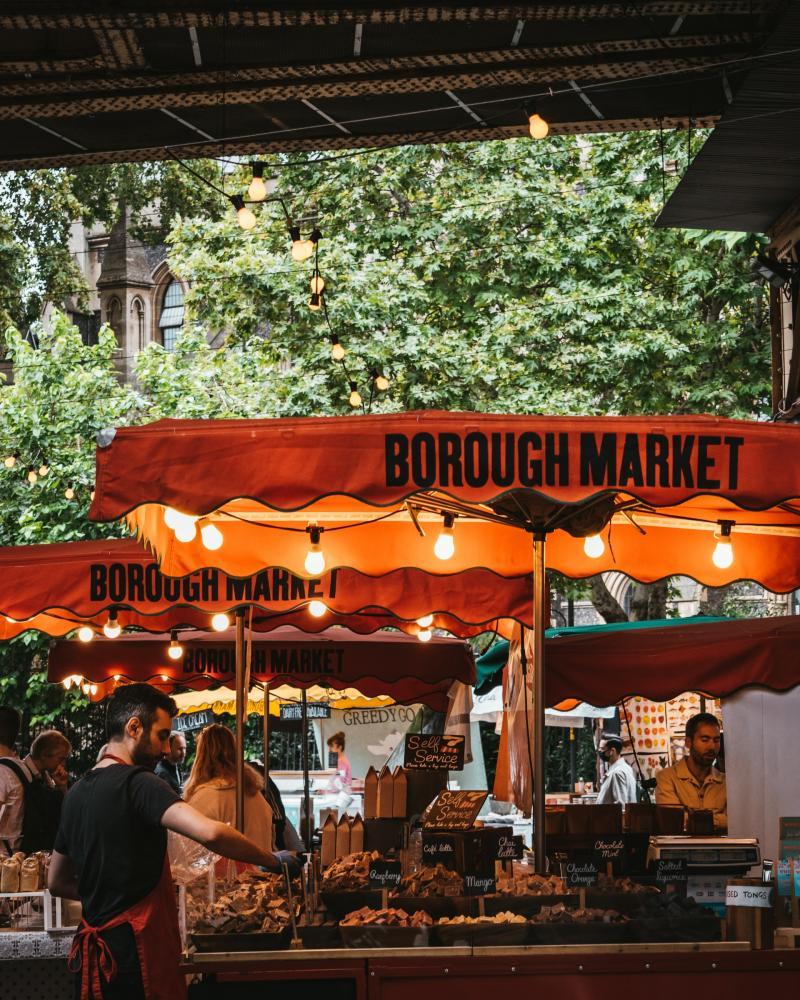
The Borough Market is believed to be very old, but it officially opened in the 18th century. It has beed restored in the 1990s and has been a great success ever since. The market has even been the scene of many films including Harry Potter and Bridget Jones’ Diary.
The wholesale market takes place every morning very early, from 2am to 8am, but it’s also open everyday from 10am to 5 or 6pm depending on the day. In addition to shopping, you can find recipes from all over the world, but also eat on the spot which is a good idea if you’re visiting London on a budget. However, you should know that the crowds are huge at lunchtime, so it’s better to arrive early.
14. Millennium Bridge
Connecting the Southwark district and the business district, the Millennium Bridge is one of the main bridges and one of London iconic buildings.
![]()
The Millennium Bridge is a 325-meter suspension bridge built in 1999. Exclusively pedestrian, this bridge has become one of the symbols of London. It’s also visible in several films, including Harry Potter and the Half-Blood Prince.
This walkway spanning the Thames brings you to some of London’s best attractions: St. Paul’s Cathedral, the Tate Modern, and the Shakespeare’s Globe Theatre.
15. The Monument to the Great Fire of London
Located between St Paul’s Cathedral and the Tower of London, The Monument to the Great Fire of London is a 61-meter stone column topped by a bronze fire bowl.

Also simply known as “The Monument”, this column was erected in 1677 in memory of the great fire that ravaged London in 1666. It stands 61 meters from the point where the fire started, which explains its height.
Visiting the Monument to the Great Fire of London isn’t an easy task: to reach the panoramic platform of the 61-meter tower and admire the clear view of the city, you have to reach the top of the 311 steps that lead to the top. It’s definitely one of the most famous buildings London has to offer.
16. Hampton Court Palace
Hampton Court Palace is a huge royal palace mixing Tudor and Baroque styles located on the banks of the River Thames, in the southwest of Greater London.
![]()
Built in 1523, Hampton Court Palace was for nearly 200 years the center of the royal court and English politics. The palace is best known for being the favorite residence of King Henry VIII. He lived there with his 6 successive wives, who all met a tragic end, that’s why some people are convinced that the king still haunts the place. Or perhaps it’s his 5th wife, Catherine Howard, who was beheaded for adultery.
The visit of the castle is guided by historians in period costume. At the entrance, it’s also possible to rent velvet capes, to soak up the atmosphere of the place.
Best Museums in London
London is above all a city of culture and as such, is entirely filled with museums. Some of them not only rank in the best museums of London, but also in the best museums of the world!
Let’s discover 6 of them, outside the British Museum as we already listed it. 🏛
17. Natural History Museum
The Natural History Museum is famous for housing some of the world’s most important life and earth science collections, including those of the explorer James Cook, and the naturalist Charles Darwin.

Located in Kensington, the museum is housed in a beautiful Victorian building completed in 1880. The museum now hosts about 70 million specimens divided in 5 main collections: entomology, zoology, paleontology, botany and mineralogy.
Visitors absolutely love discovering the famous blue whale skeleton, the huge dinosaur skeleton as well as the interactive exhibitions on earthquakes and volcanoes. You’ll have to queue a bit to enter the museum, but you won’t regret it!
18. Tate Modern
The Tate Modern is a museum of contemporary art located on the other side of the Thames, opposite St Paul’s Cathedral.

Installed in a former power station, the works exhibited here come from all over the world, and the oldest ones date from 1900. They are spread over 5 levels, classified by theme.
Floors 1, 2 and 4 present temporary exhibitions. On levels 3 and 5, there are sections dedicated to abstract works, poetry, cubism, futurism and vorticism.
19. Madame Tussauds
Who doesn’t know Madame Tussauds and her 300 wax figures? Royal family, Hollywood stars, legendary sportsmen or politicians, they are all represented in this museum located on Marylebone Road, near Regent’s Park.
The museum was founded in 1835 by Marie Tussaud, a French wax sculptor who narrowly escaped beheading during the French Revolution of 1789, and then went into exile in London a few years later. The museum gradually grew and moved to its current location in 1884.
Of course, the main attraction of the museum is the life-like statues of a large number of celebrities as varied as Brad Pitt, the Beatles, Napoleon, Britney Spears, David Beckham, the Queen of England or E.T. But the museum also offers animations, including the “Spirit of London” and the “Chamber of Horrors”.
20. Science Museum
Right next to the Natural History Museum is the Science Museum, one of London’s most famous landmarks.
It’s more a museum of techniques and technologies than a science museum: from the steam locomotive to 3D printing, it exhibits the technological applications of scientific discoveries through the ages since the early 1920s.
While some of the exhibitions are intended for adults, many of the topics are geared toward younger audiences. Today, the Science Museum of London is the world’s leading center for the presentation of contemporary science and strives to diversify its educational themes as much as possible.
21. The National Gallery
The National Gallery is a London museum located in the famous Trafalgar Square. It displays nearly 23,000 paintings covering a period from 1250 to 1900.

The museum first opened its doors in 1824 in an old mansion owned by the painter Argerstein. The gallery’s holdings were very modest at first, limited to 36 paintings. Later, many works were given by benefactors, so that two-thirds of the National Gallery’s collections were acquired in this way.
In the museum, there are paintings by English painters, but also from all over the world. For example, Paul Cézanne (France), Sandro Boticelli (Italy), or Diego Rodriguez (Spain).
22. HMS Belfast
HMS Belfast is a WWII Royal Navy cruiser displayed on the Thames near the London Bridge subway station.

Built at the very beginning of the conflict in the Belfast shipyards in Northern Ireland, it’s the only surviving British warship of that era. In June 1944, it was one of the hundreds of ships that challenged the Third Reich on the Normandy coast during D-Day. Later, it was assigned to the Pacific Ocean to fight against Japan, and participated in the Korean War a few years later. It was finally disarmed and preserved as a museum ship in 1963.
Accessible to the public since the early 1970s, the ship is docked near the Britain At War Experience Museum, another site of the London memory of WWII. Visiting the ship allows visitors to discover its propulsion system, its armament, and to learn about life on board.
Famous Districts & Squares in London
London itself is a monument: the city is filled with beautiful streets, districts and squares that are definitely must-see attractions. That’s why London is one of the most magical cities in the world!
Here are 6 of them! ⛲️
23. Piccadilly Circus
Piccadilly Circus is a very famous crossroads of London. It’s to London what Times Square is to New York.
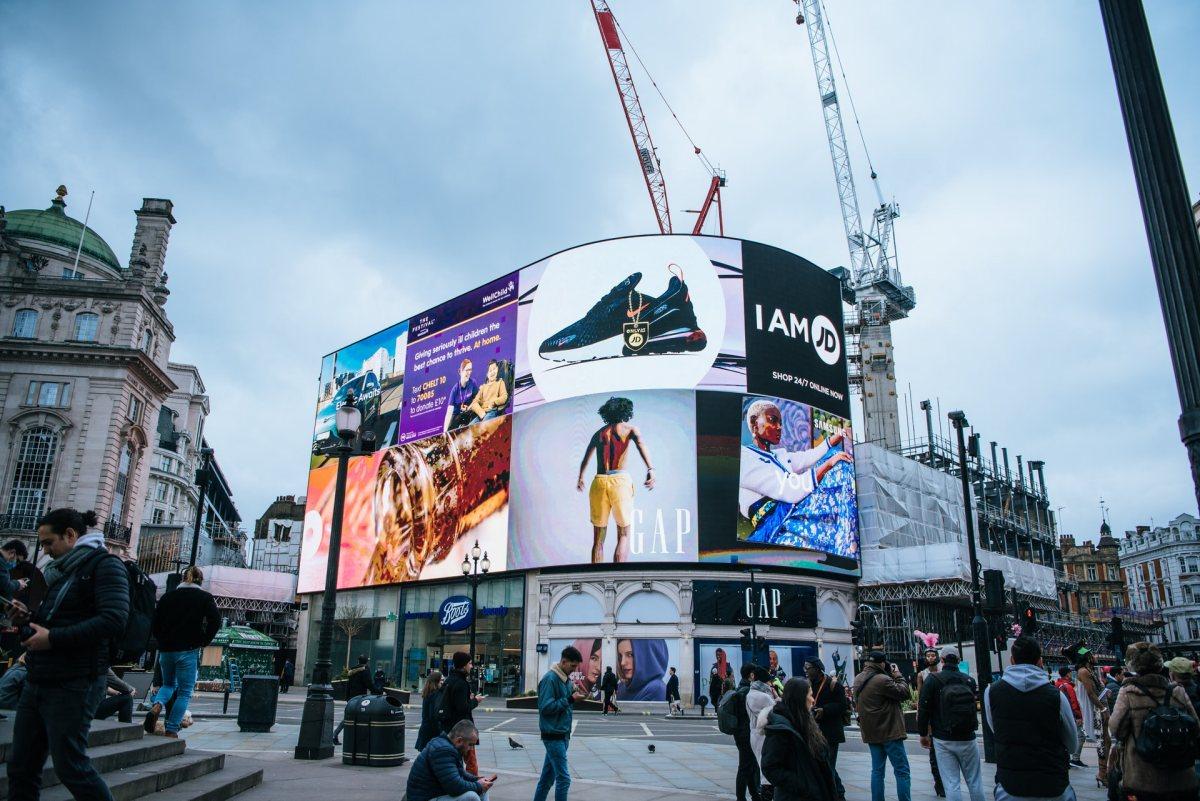
There are illuminated signs and video screens displayed by big brands. Many outdoor concerts and commercial events take place here. Shopping lovers will have to stop here, and it’s also a hotspot of London’s nightlife.
But Piccadilly Circus is also a historical place: we can find the Criterion Theatre, as well as the Shaftesbury Memorial, which honors Anthony Ashley-Cooper, a British politician who played an important role in the fight against child labor.
24. Covent Garden
Covent Garden is a pedestrian district of London. Constantly buzzing, the place is very popular with street artists: musicians, jugglers and mimes give a special atmosphere to the place.

Covent Garden is also famous for its covered market where you can find original souvenirs, handicrafts, porcelain, jewelry or clothes. From November to December, Christmas decorations illuminate it with lights that change every year, which make it one of the best Christmas markets in London.
The district is also known for hosting the Royal Opera House, the London Transport Museum and many nice bars.
It used to be the London market, but it was moved in the 1970s. Covent Garden has fortunately kept its pretty glass roof which makes the charm of the place, and under which many stores, workshops and restaurants are now installed.
25. Camden Town
Located in the north of the city, Camden Town is London’s trendy district known for its underground atmosphere, its stores with crazy facades and its market. It’s definitely a top London landmark you can’t miss when in town.

At first, Camden Lock Market was only open on Sundays. It has gradually expanded to every day of the week. On weekends, nearly 100,000 visitors come to the market to find all kinds of items, crafts, clothes and even food.
In this lively area, you’ll also find many bars and restaurants serving food from all over the world.
26. Trafalgar Square
Trafalgar Square is a famous square in London, located in the Westminster district. It’s a must for all travelers visiting London.

Before the construction of Trafalgar square, the royal stables were located here. They were destroyed to be replaced by this square in 1840. Its name comes from the battle of Trafalgar, fought and won against Napoleon in 1805. The column that stands in the center was erected in honor of Admiral Nelson, the soldier who led the English fleet against Napoleon’s army.
Today, the square is the site of various events. It’s here that Londoners gather for major celebrations such as New Year’s Eve, St. Patrick’s Day, as well as for sports, social and festive events.
27. Carnaby Street
Carnaby Street is a pedestrian and shopping street in the district of Soho, near Covent Garden and the British Museum.

The origins of Carnaby Street and some of the houses still visible on the street stretch back to the 17th century. The first store was opened in 1958 and was followed by several small shops. Its development accelerated in the 1960s with the arrival of popular bands such as the Rolling Stone and the Beatles.
Today, the street is a true attraction in its own right, with many small specialist fashion stores as well as world-famous brands.
28. Portobello Road
Portobello Road is a very famous avenue that crosses the district of Notting Hill in West London. The area is filled with pastel-colored houses lined with galleries, stores offering a varied range of objects from all over the world.

Portobello Road was built in the Victorian era, and still has some remnants of that era that you can see on the houses. At the time, it was a fruit and vegetable market. Antique dealers made it their own in the 1960s. Since then, it’s a place where cultures and communities mix, with a very special atmosphere.
On Saturdays, Portobello Street is transformed into a large flea market. More than 1,500 stalls are set up in the street, a true paradise for bargain hunters who come to look for second-hand clothes, valuable furniture or more unusual objects.
Famous Parks & Gardens in London
London has also many green spaces that are top-rated attractions, and have to be listed in this post. Whether it is due to their history or their beauty, the following gardens are popular among both locals and tourists.
Let’s discover some of them outside Hyde Park, as we already listed it! 👇
29. Kew Gardens
The Royal Botanic Gardens of Kew covers 121 hectares in West London. Kew Gardens are home to the world’s largest herbarium with over 30,000 species of plants, and to Kew Palace, the smallest of all the royal palaces.
![]()
Kew Gardens features impressive greenhouses recreating the climatic conditions of the 5 continents. The most famous greenhouse is of course the Palm House, a unique mid-19th century construction of wrought iron and glass.
Exhibitions, conferences and workshops are organized throughout the year. For example, you can come and learn how to make your own cosmetics and remedies from plants, attend open-air concerts or discover past and present botanical art.
30. Sky Garden
The Sky Garden is a rooftop garden located on the 35th, 36th and 37th floors of the 20 Fenchurch Street skyscraper, better known as the Talkie-Walkie, because of its curved shape.
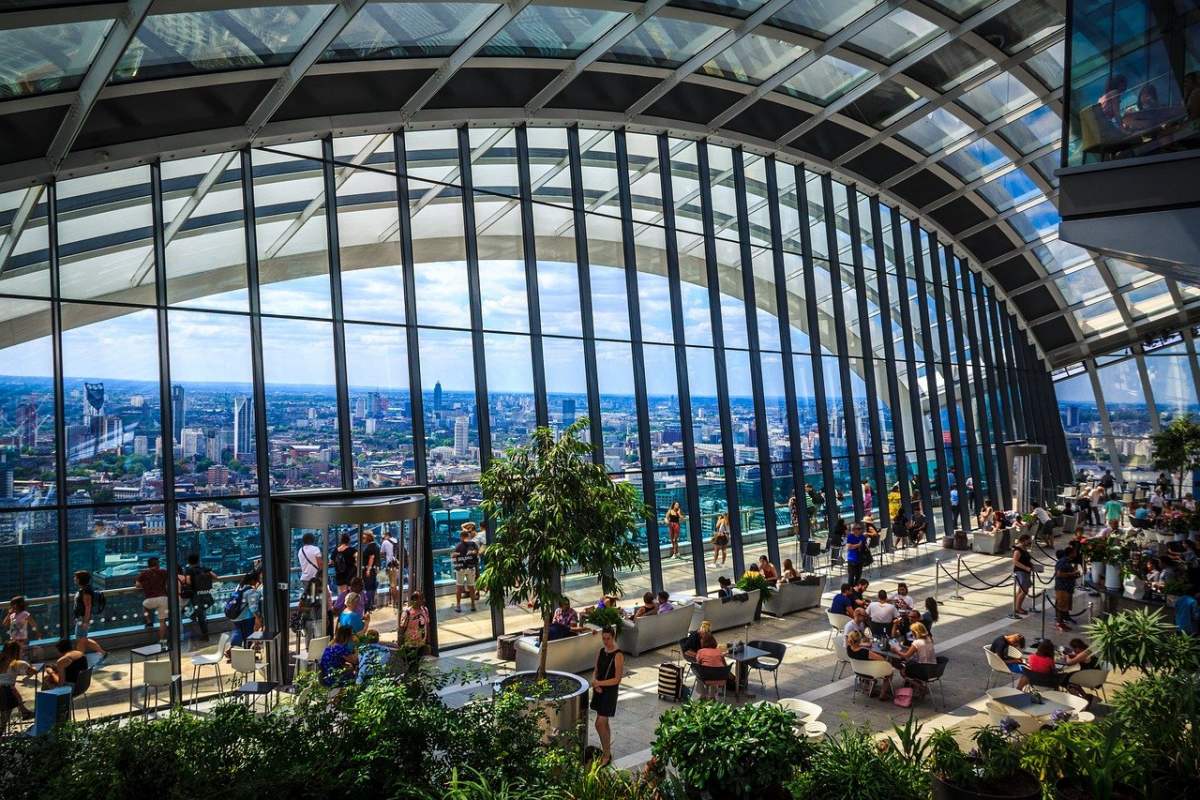
This garden designed in 2014 by the landscape designers of the Studio Gillespies is rightly considered the tallest public garden in London, consisting of a shady forest and sun-loving plants such as ferns and palms.
20 Fenchurch Street is ideally located to observe London’s most beautiful landmarks from above. Its panoramic terrace offers a breathtaking view, especially at sunset. The Sky Garden also offers you the possibility to sit down for a meal or a drink. A popular spot among both locals and tourists!
31. The Regent’s Park
The Regent’s Park is an ocean of greenery in the heart of London, between the districts of Westminster in the south and Camden in the north. It is one of the largest parks in London with 166 hectares.

Former hunting ground of Henry VIII, the Regent’s park opened its doors to the public in 1838.
The park includes a large number of attractions for your relaxation, to exercise, to stroll with your children or with your lover. It has several gardens, a pleasure lake, an open air theater, a zoo, cafes and restaurants…
Other Famous Landmarks of London
London has such a rich heritage it was impossible to keep the list under 30! We’ve added 24 other popular London landmarks you should visit if you’re lucky to spend more than 2 weeks there.
You’ll find famous monuments in London, but also museums, parks, buildings and more gathered by borough.
Let’s jump right to it! 🔥
Westminster

Chinatown Gate
- St James’s Park
- The Churchill War Rooms
- National Portrait Gallery
- Chinatown Gate
- Westminster Cathedral
- The Wallace Collection
- Somerset House
Kensington and Chelsea
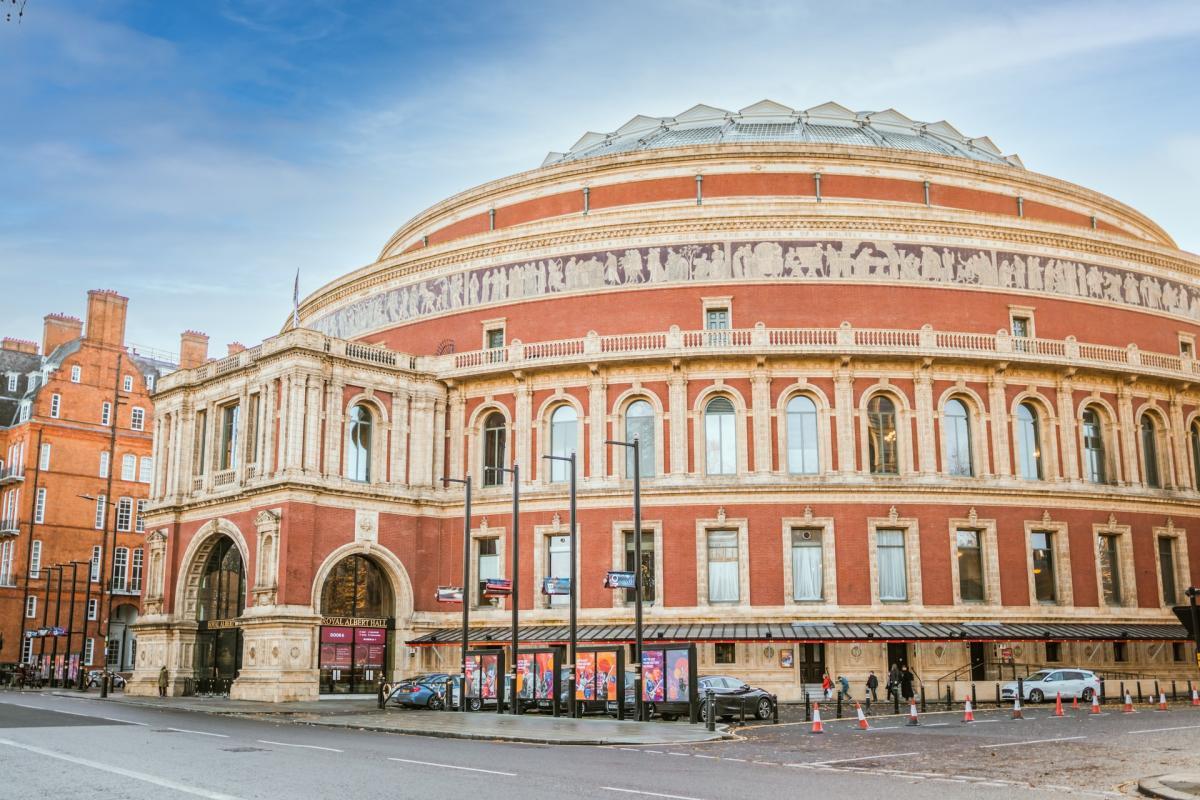
Royal Albert Hall
- Royal Albert Hall
- Victoria and Albert Museum
- Holland Park
City of London

St Mary Axe
- St Mary Axe
- Museum of London
- Barbican Centre
Southwark
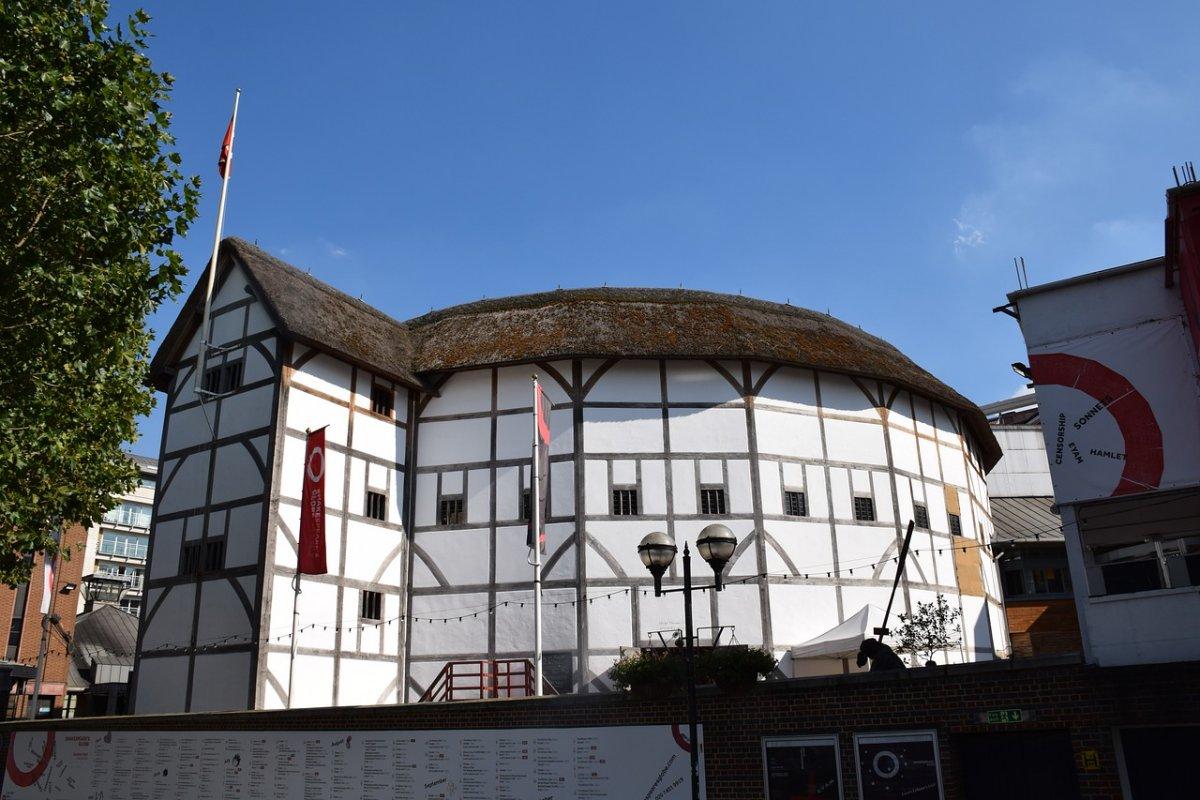
Shakespeare’s Globe
- Shakespeare’s Globe
- Southwark Cathedral
Lambeth

Imperial War Museum
- Imperial War Museum
- Sea Life Centre
Camden

- King’s Cross
- London Zoo
- Studios Abbey Road
- Hampstead Heath
Greenwich
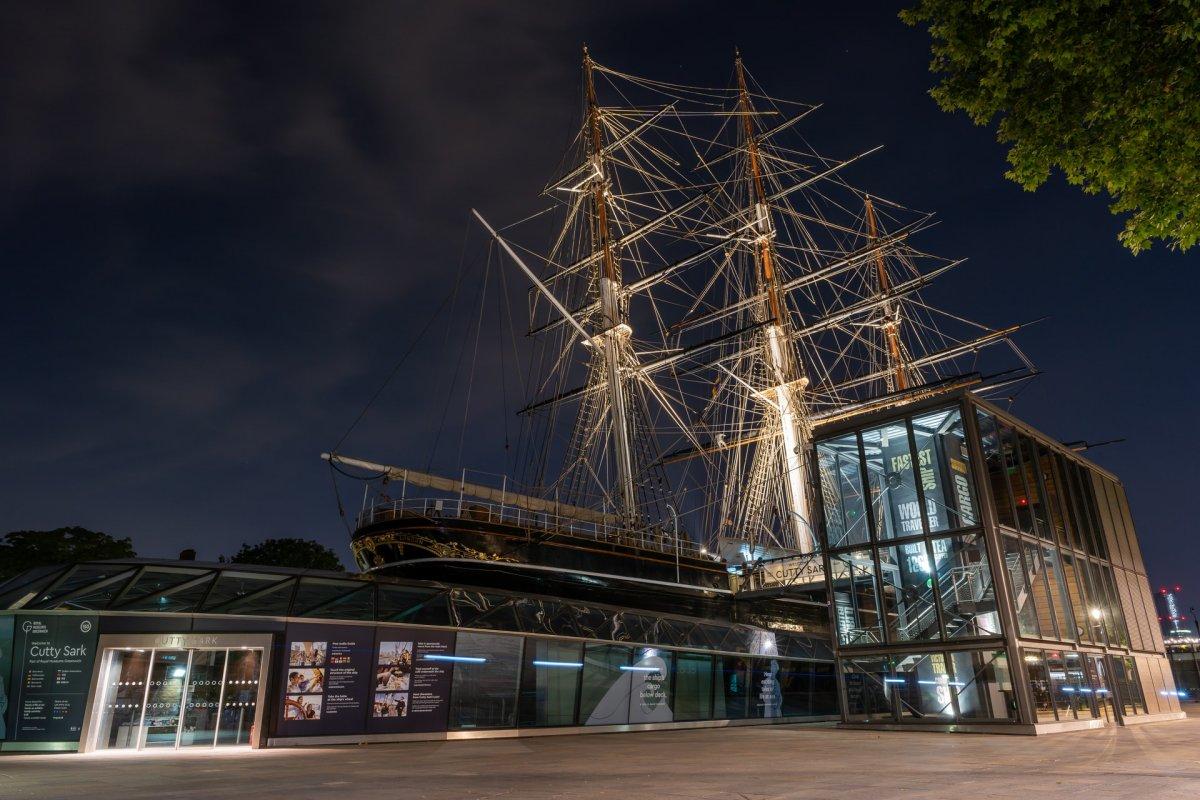
Cutty Sark
- Royal Observatory Greenwich
- National Maritime Museum
- Cutty Sark
Map of Landmarks in London
Here’s the map of the 55 famous landmarks London has to offer. To get it, simply click on the image below to open it in Google Maps. Then click on the “star” icon to save it to your own maps.
More Landmarks in England
Want to discover more famous landmarks in England? Well, I have other posts will be useful to you!
Here’s the complete guide of all the very best English landmarks 👉 +70 Famous Landmarks in England
And you can also find other city-based landmarks guides:
- Famous Landmarks in Liverpool
- Famous Landmarks in Bristol
- Famous Landmarks in Birmingham
- Famous Landmarks in Leicester
- Famous Landmarks in Manchester
For more, you can also check all our UK guides.
I hope you’ve found all the information you needed to make your England bucket list through these posts. Don’t hesitate to comment below if this is the case, I would be very pleased to read your feedback!
Loved this post? Share it with your friends by using the buttons below, I’m sure they’ll love it 🙂
Pin this to Pinterest!
Enjoyed this guide? Then help a fellow traveler and pin it! They'll most definitely love you for it, 100% guarantee.



